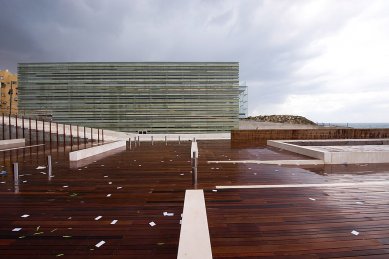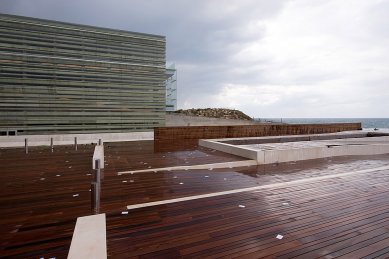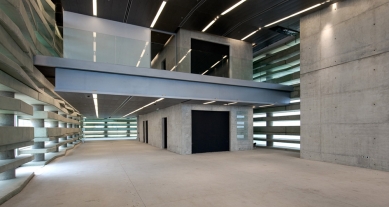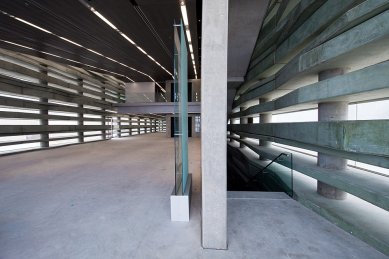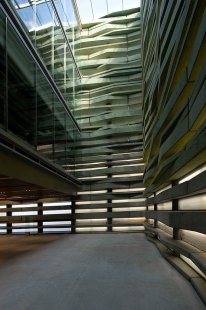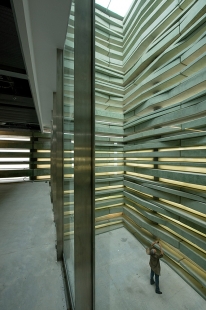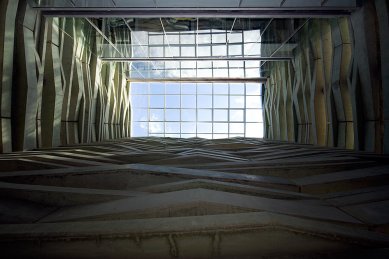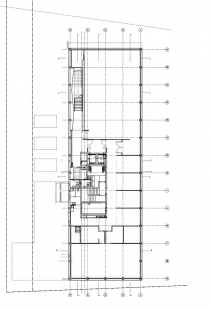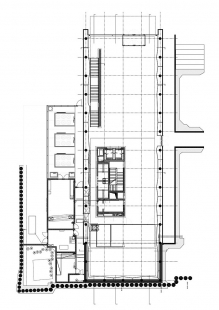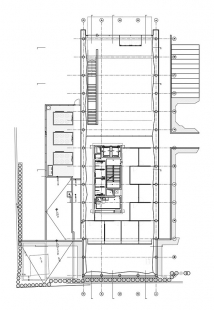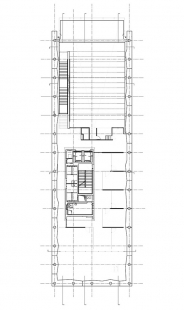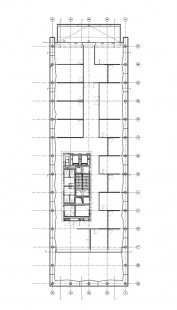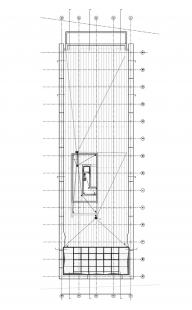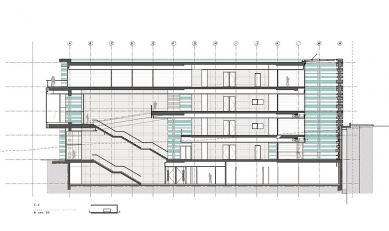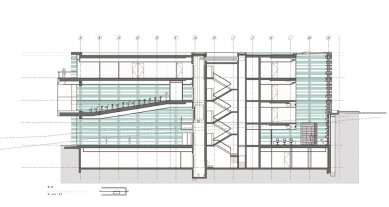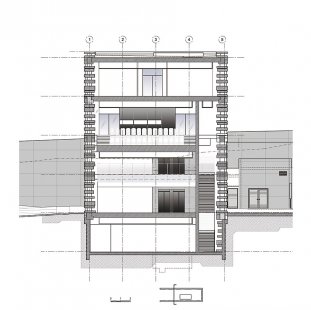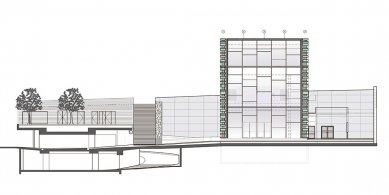
Peace Peres House

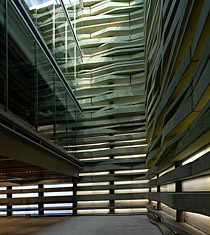 |
Peace is a spiritual condition, an aspiration: tension and utopia.
The projection of will into the future is also an expression of hope that our children and future generation will live in a better world. Peace cannot be enclosed in wrapping: it’s, rather, a sensation of fullness and serenity that can be communicated through a place, or through architecture.
I have thought of a series of layers, a building that represents TIME and PATIENCE in strata of alternating materials representing places that have suffered heavily. Concrete composed of alternating and superimposed types of sand and aggregate. A stone basement to raise the building, a meeting place from which two long staircase lead to a place of “rest”, whose size and height, full of light from above, helps us to forget the troubles of the world, and fill us with the positive attitude that is needed for our meeting with other men and other women. The outside of the building has alternate layers of concrete and translucent glass. The transparency of the glass will filter the light through to the inside during the day, and by night will send it back outside, entrusting this magical image with the spiritual and concrete message the site will inspire.
Architecture today must set itself as an aid, a hand to help us cope with the difficulties of understanding. This project represents the venue of an encounter, a debate, reasoning and solutions.
The Peres Centre for Peace is a parallelepiped. Obtained by irregularly shaped glass and concrete layers standing on a monolithic base: at one end of the building is the entrance to the car park, at the other the pedestrians entrance. At this point the basement becomes a large plaza, an empty space dissected lengthwise by two symmetrical ramps leading inside. This dark and low-ceilinged area leads to the inside of the well of light that is open for the whole height of the building, where is situated the Library. From here the alternating light and dark layers are visible; the former, in glass, lit from the outside and the latter, in concrete mixed with other materials and local earth.
The rest of this floor is designed to house various activity of the Peace Peres House.
The remaining three floors, each covering a space of 600 sqm and a height of 3,4 m., that are accessible with stairs and lifts, and contained a auditorium, intended to 200 persons, and offices of the Peace Peres House and spaces for meeting.
Massimiliano Fuksas Architetto
1 comment
add comment
Subject
Author
Date
You forgot the israeli architect
noamzv
25.05.09 07:49
show all comments


